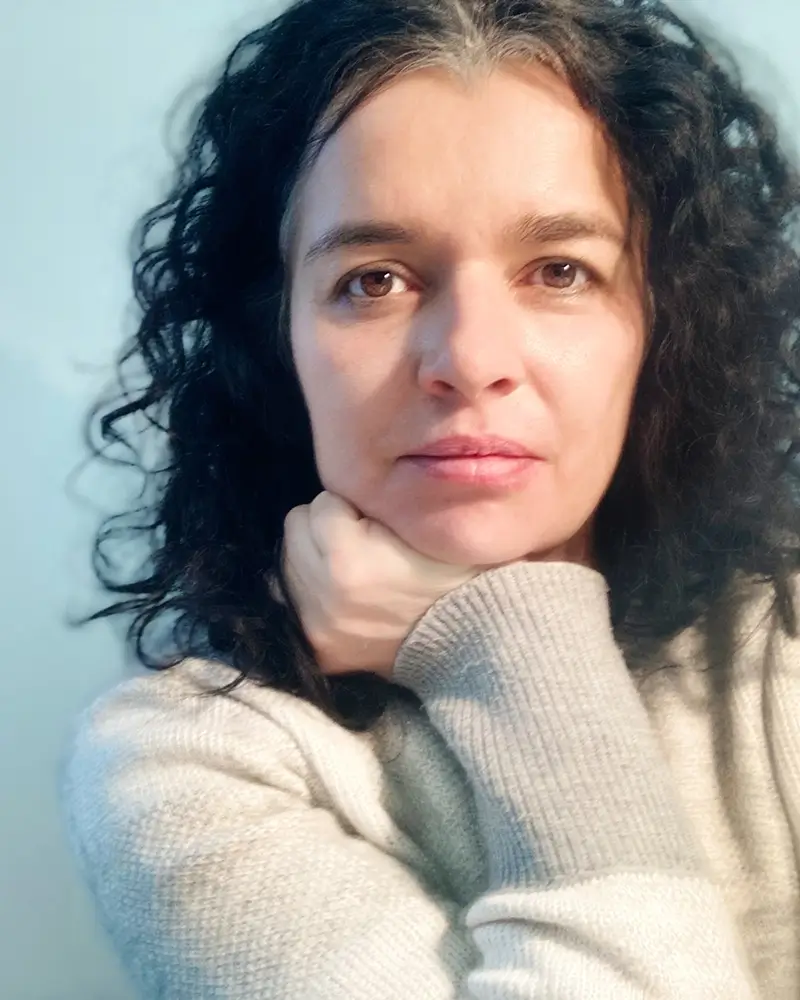An artistic journey commenced amidst the vibrant Hungarian art scene, where the artist studied drawing, jewelry making, graphic design, photography, and contemporary dance. While an initial passion lay in drawing and painting, photography swiftly emerged as her primary voice.
Further skill development was achieved through a diploma in communications design from the University of Applied Sciences Dortmund in Germany, followed by an MFA from the San Francisco Art Institute. These educational experiences, coupled with a childhood spent navigating different cultural landscapes, have profoundly shaped Ajtay's perspective.
The artist's conceptual work delves into themes of home and belonging, the psychology of language, the impact of societal change, and the spectrum of human emotions and the soul. Their practice is deeply rooted in personal experiences as a migrant and nomad, marked by constant adaptation to new environments that necessitate a complete rewiring of the brain, total openness, and reorientation. Change, identified as life's most constant aspect, lies at the core of her explorations, prompting deep dives into reorientation, loss, the unknown, and even death.
ELisabeth Ajtay's work is held in numerous private collections and has been exhibited internationally across Europe and the United States. Notable venues include festivals such as inSPIRACJE and Art Moves in Poland, Goethe Institutes in Morocco, Prague, New York, and France, and galleries like Don Soker Contemporary Art in San Francisco. Museum exhibitions include the MKK - Museum for Art and Cultural History Dortmund, Germany, and Blue Star Contemporary in San Antonio, Texas.
Recognition has come in the form of an honorable mention from PX3-Prix de la Photographie Paris, inclusion in the San Francisco Arts Commission's Prequalified Artist Pool, and residencies at the 3rd Street Studio Programs (San Francisco Art Institute), BANFF Center for Arts and Culture (Canada), and the Vermont Studio Center. She received several honorable mentions from the International Photography Awards.
Towards Perfection: Series MoonABC
"Towards Perfection" is a digital collage, composed entirely of circles,
represents the challenges I faced while creating my moon alphabet. Each circle
is a testament to the difficulties, frustrations and endurance encountered in
capturing the letter 'O' using the moonlight as I was slowly moving my camera.
About the series:
The idea of creating a moon alphabet started somewhere in 2014 with me sitting on the
stairs in front of my house in SF, finding calm in the ever present light of the moon. I was
working on my artist visa and tied down with no status, no existence - practically being an
alien resident on hold - I had plenty of time thinking about how I could push my work with
the moon further. Further, in terms of overcoming that what is visible. The moon has been
exposed and explored to numerous artistic expressions and, scientific ones. I did not mean
to repeat but to expand. Also, having been working for almost 20 years with a camera,
there are moments when I am tired of the medium. I began making art with my hands
first, drawing, painting and even dancing for many years I would consider a very physically
based expression. Making images with a camera is very different, the body is less involved,
instead, a lot of editing and thinking, once the "klick" happened. One night I simply
grabbed my camera and began tracing the light. First randomly, then more purposefully,
with the solely intention of putting my body into the image. Movements.
After some time, I wrote my initials and from there, I began practicing the remainder of
the letters. At some point, Alan Bamberger, told me what I was actually doing - a moon
font. It took me another year to complete the alphabet and train my hand to as much
perfection as my body was able to offer.
During these two years, I was reading numerous books on communication and technology.
The points that fascinated me outlined how technology effects our brains, the level of
empathy and how we change our social patterns within society.
Those readings were my "back ups" in exploring my physicality in conversation with nature,
or, the physicality of the moon.
On another level, creating an alphabet is to some extent a reflection of my multilingual
presence. It is sometimes hard phrasing thoughts when the tongue is moving differently, or
you have another language's rhythm inside you. It can confuse, cause mayonnaise. Having
babel inside and on the outside (history repeats itself).
